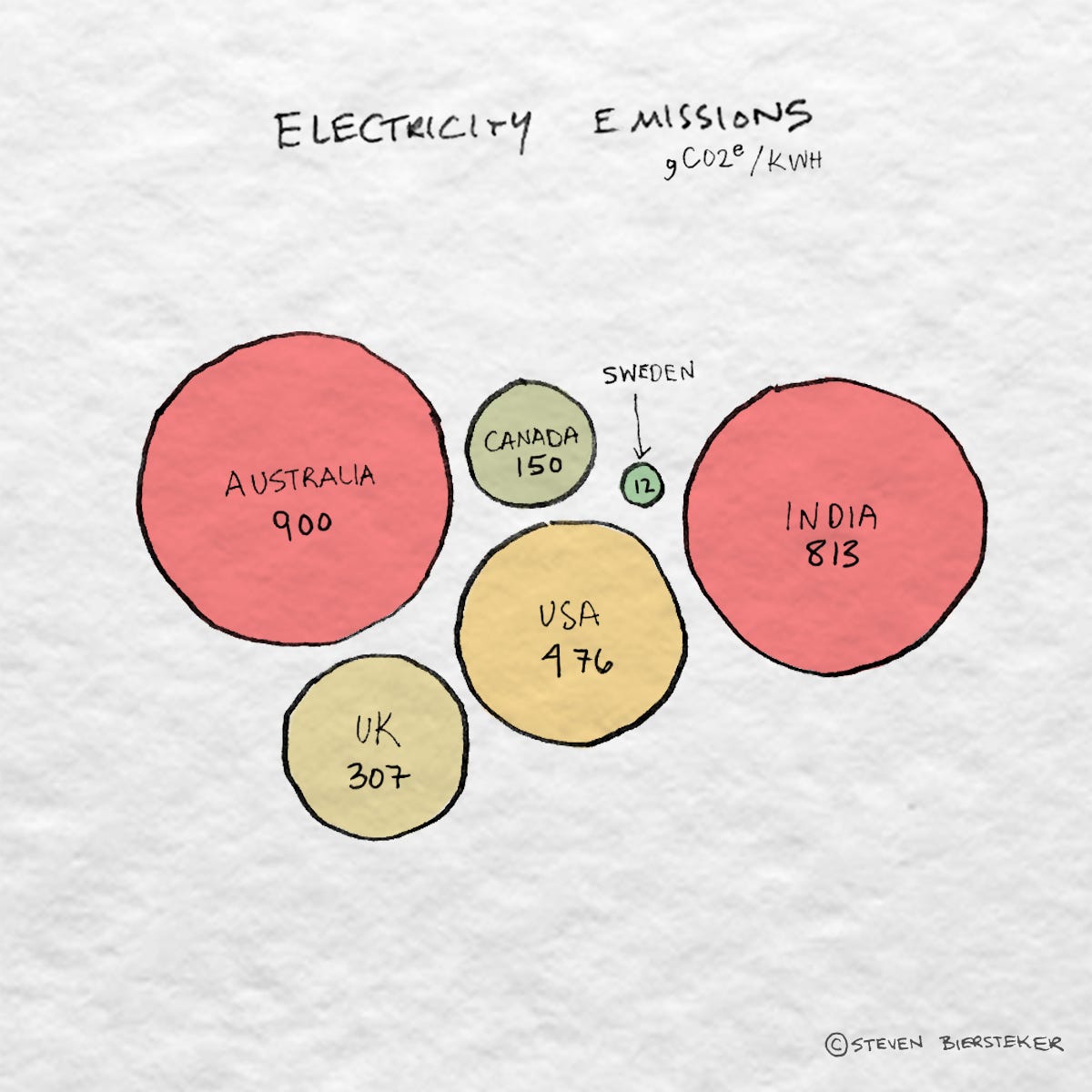CA02 - The Shocking Truth
What's in your electricity
THE TOPIC - WHAT’S IN YOUR ELECTRICITY
Energy is a fascinating topic. In the modern world, we rely heavily on cheap and readily available energy but most people have no idea how their energy is created, where it comes from, and what impact it has on the environment.
Thankfully this is changing as people are beginning to understand the impact of different energy sources on our climate. Despite this improvement, there is still a strong need for education in this area.
In buildings there are typically two sources of energy:
1 - Electricity
2 - Fossil Gas (often referred to as natural gas)
Fossil Gas is relatively straightforward. It is usually used in either space or water heating and when it is burned it releases heat. It also releases a large amount of Green House Gases during this process. Think about how your car works, it’s a similar concept. Combustion!
Electricity on the other hand is much more complicated. Electricity is generated in many different ways depending on the place you live. It could be created by burning fossil gas, solar panels, wind turbines, nuclear plants, burning coal, hydroelectric damns, or simply burning wood. Every place has a different electricity makeup.
The focus of this week’s newsletter is the importance of electrification.
THE GRAPHIC
WHY IT MATTERS
Electrification matters for these three reasons:
Electricity will decarbonize over time
Electric heating systems are more efficient
Electricity can be generated on-site
Let’s dig a little deeper:
1 - Electricity will decarbonize over time
Electricity is produced by a number of clean and dirty sources.
As you can imagine, the GHG emissions of electricity produced by coal vs solar is very different.
As governments offer more incentives and push the green agenda we will see GHG emissions from electricity go down over the next 10, 20 & 30 years.
This story isn’t exactly true all around the world however as developing nations look to coal and fossil gas to produce the massive amounts of energy that we in the developed world take for granted. (This is a large topic for another day)
All this to say, even if your electric grid is dirty today it may look a lot different in 30 years.
Here is the main point. If you design a building connected to a fossil gas system you will not benefit (much) from future grid improvements. Your building’s carbon footprint will only be improved once those systems are replaced.
Electrify and take advantage of greening grids.
2 - Electric heating systems are more efficient
Heating & cooling systems contribute the majority of energy used in buildings.
Since cooling systems run on electricity, your heating system is typically the largest source of your GHG emissions (unless of course, you don’t need to heat your building - count yourself lucky)
The great thing about electric heating systems is their high-efficiency rates.
This makes logical sense when you think about the amount of heat that escapes up your chimney when you put your fireplace on. Not all the energy you consume is actually used.
Electric systems range in efficiency depending on the type of system you choose.
Baseboard heaters, for example, run at 100% efficiency converting all the inbound energy into heat.
Heat pumps can run up to 300% efficient which is why they are so effective in reducing energy needs.
3 - Electricity can be generated on-site
A huge benefit of electrification is the ability to add energy generation to your building over time. In order to take advantage of on-site energy generation, electric building systems are critical.
A home that operates on fossil gas cannot enjoy the benefits of solar power to the same degree. Yes there could be an offset of some minor systems but not to the same degree as a building that is fully electrified.
By designing a building with all-electric systems you allow it to tap into on-site energy production over time rather than waiting for the fossil gas systems to be replaced.
1 TIP - HOW TO REDUCE
Building electrification is an important step to reducing the impact of buildings on the environment. Even in areas with “dirty girds” there is evidence, like this article from Jack Rusk, it is better to have an electrified system from a GHG point of view. Thanks to the greater efficiencies of electric heating systems and cleaner energy grids.
Basically - electrification allows you to use cleaner energy and allows you to use less energy by heating your building with more efficient heating systems.
1 RESOURCE - TO HELP YOU ACT
You can see what your electricity grid is like and how it is expected to change.
Checkout these interactive sites for both CANADA & USA.
If you have this info for the UK or other countries I’d love to see it!


